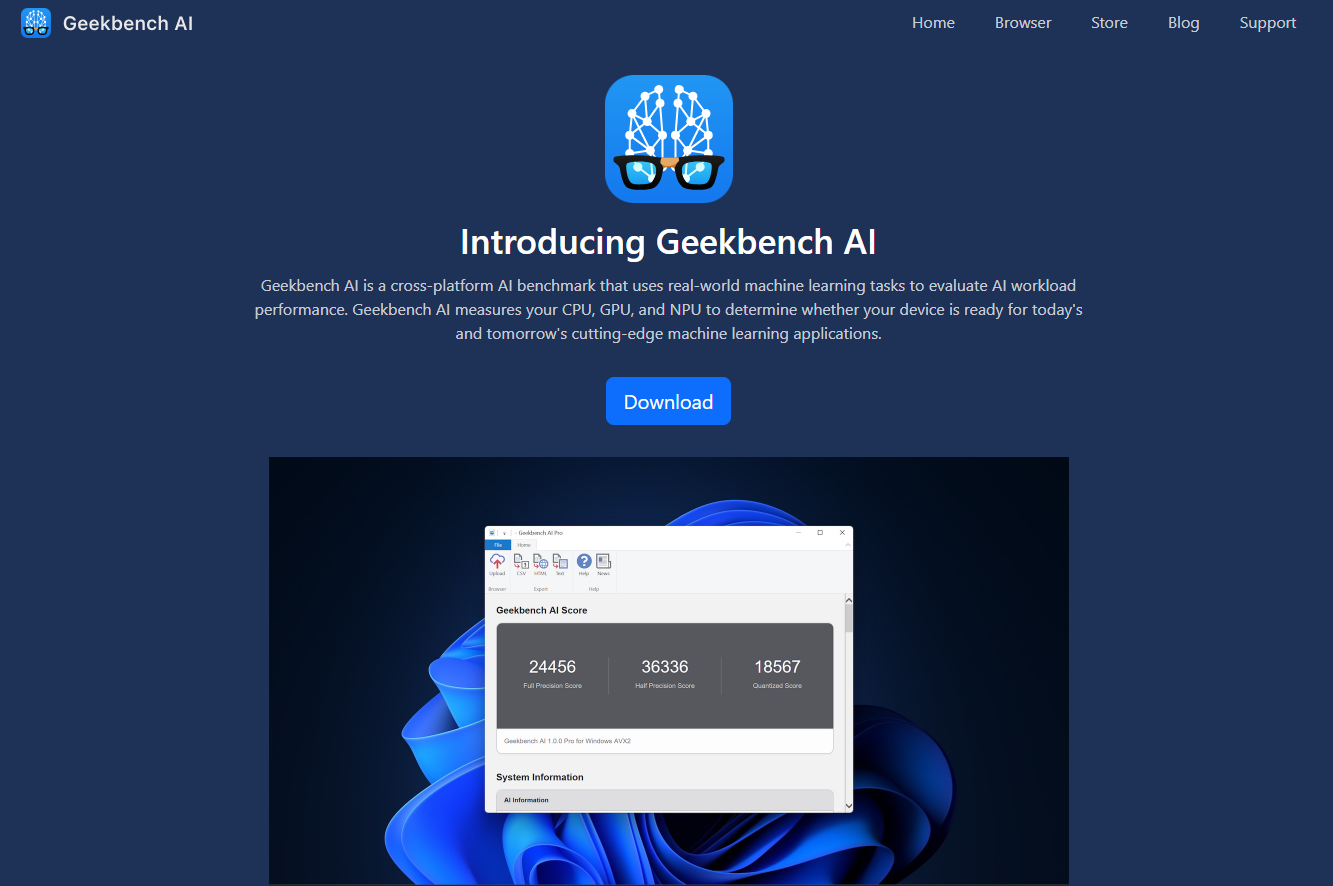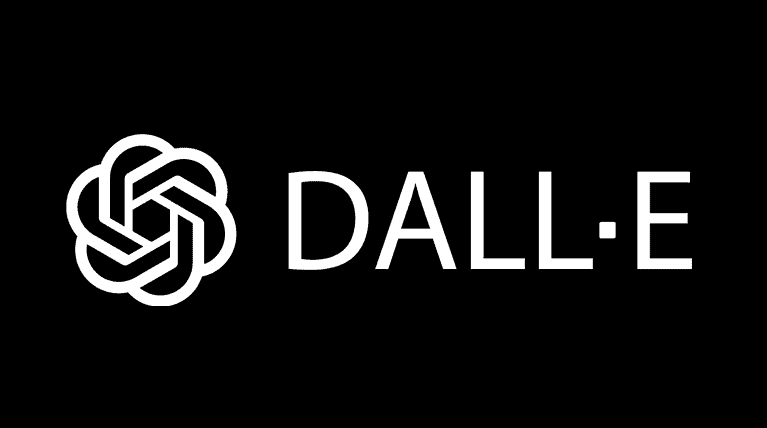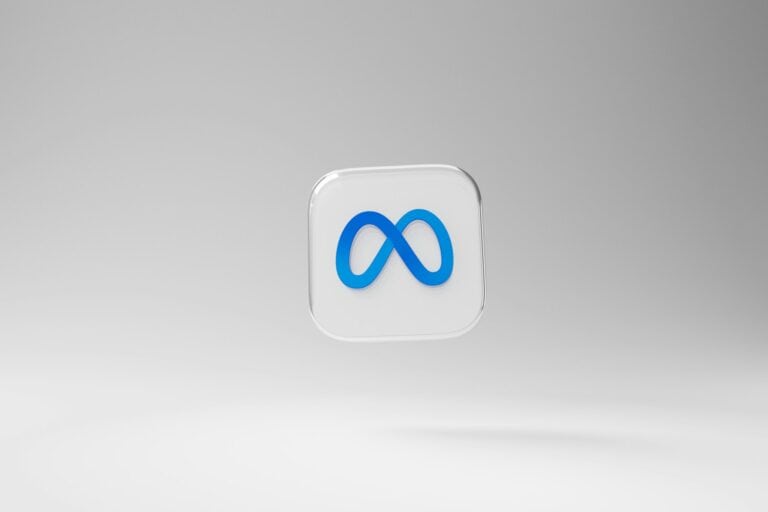
Geekbench AI is a new benchmark tool for testing artificial intelligence performance on various devices. Released in August 2024 by Primate Labs, it helps users check if their computers can handle AI tasks. The tool measures how well a device runs machine learning and other AI workloads.
This benchmark works on different types of computers and phones. It tests things like image recognition and language processing. Users can see how fast their device completes these AI jobs compared to others.
Geekbench AI builds on the company’s earlier machine learning tests. It gives a simple way to rate AI abilities across many devices. This helps people pick the right hardware for AI work or see if their current device is ready for AI apps.

Geekbench 6: Measuring AI Performance
Geekbench, a popular cross-platform benchmarking tool, has expanded its capabilities to measure the performance of machine learning and AI tasks on various devices. This new feature allows users to compare the AI capabilities of different processors, including those found in smartphones, tablets, and computers.
https://www.geekbench.com/ai/download
How Does the AI Benchmark Work?
The Geekbench AI benchmark evaluates a system’s performance across a range of machine learning tasks, including:
- Image Classification: Identifying objects within images.
- Image Enhancement: Improving the quality of images (e.g., upscaling, noise reduction).
- Object Detection: Locating and identifying specific objects within images.
- Semantic Segmentation: Classifying pixels within an image by their object class.
- Natural Language Processing (NLP): Tasks like text summarization, question answering, and language translation.
The benchmark uses a variety of machine learning models and datasets to provide a comprehensive assessment of AI performance.
Why is AI Benchmarking Important?
AI is becoming increasingly integrated into our devices and applications. Measuring AI performance helps to:
- Compare Devices: Users can compare the AI capabilities of different smartphones, tablets, or computers before making a purchase.
- Track Progress: Benchmarking allows us to track the progress of AI hardware and software over time.
- Optimize Performance: Developers can use benchmarks to identify areas for optimization in their AI models and applications.
- Understand Capabilities: Benchmarking helps users understand the real-world capabilities of AI on their devices.
Key Features of Geekbench’s AI Benchmark
- Cross-Platform: The benchmark runs on various operating systems, including Android, iOS, macOS, and Windows. This allows for fair comparisons across different devices.
- Multiple Machine Learning Frameworks: The benchmark supports several machine learning frameworks, including TensorFlow Lite, Core ML, and ONNX Runtime.
- CPU and GPU Testing: The benchmark measures AI performance on both CPUs (central processing units) and GPUs (graphics processing units).
- Intuitive Scores: Geekbench provides easy-to-understand scores that represent overall AI performance as well as performance in specific tasks.
Understanding the Results
Geekbench provides separate scores for different AI tasks and overall performance. Higher scores indicate better performance. The results can be compared across different devices and platforms to understand the relative AI capabilities.
The Future of AI Benchmarking
As AI continues to evolve, so will the benchmarks used to measure its performance. Geekbench and other benchmarking tools will likely incorporate new machine learning models and tasks to reflect the latest advancements in AI technology.
With its AI benchmark, Geekbench provides a valuable tool for understanding and comparing the AI capabilities of various devices. This information empowers users, developers, and researchers to make informed decisions and push the boundaries of AI innovation.
Key Takeaways
- Geekbench AI tests device performance on artificial intelligence tasks
- The tool works on multiple platforms and measures various AI workloads
- It helps users compare their device’s AI abilities to others
Overview of Geekbench’s AI Benchmark Tool
Geekbench’s AI Benchmark Tool measures how well devices handle AI tasks. It tests different parts of computers and phones to see how fast they can do AI work.
Purpose and Significance
The Geekbench AI tool checks if devices can handle today’s AI needs. It runs tests on CPUs, GPUs, and NPUs to measure AI performance. This helps users know if their device is ready for AI apps.
The benchmark looks at key AI tasks. These include computer vision, object detection, and image sorting. By testing these areas, it gives a clear picture of AI abilities.
For tech companies, the tool helps compare products. It lets them see how their devices stack up against others. This can guide future AI hardware plans.
Geekbench AI 1.0 Introduction
Geekbench AI 1.0 came out in August 2024. It was the result of years of work and feedback. The team tested it with customers, partners, and AI experts before release.
This version brought some big changes. It got a new name, moving from Geekbench ML to Geekbench AI. The update also added new features and tweaks based on user input.
The tool aims to be fair and useful. It tries to give scores that reflect real-world AI use. This helps buyers make smart choices about tech purchases.
Cross-Platform Utility
Geekbench AI works on many types of devices. It can test phones, tablets, and computers. This wide support helps users compare different brands and models.
The tool adjusts to each device’s setup. It can use CPUs, GPUs, or NPUs for its tests. On Windows PCs, it works with new tech like Microsoft’s DirectML.
This flexibility is key. It means the benchmark can keep up as AI hardware changes. Users get a fair test, no matter what device they have.
Supported Platforms and Frameworks
Geekbench AI runs on many devices and uses different AI tools. It works with popular systems and frameworks to test AI performance.
Operating System Compatibility
Geekbench AI works on computers and phones. It runs on Windows, macOS, and Linux for desktop users. Mobile users can use it on Android and iOS devices. This wide support lets people test AI speed on many gadgets.
The benchmark adapts to each system. It uses the right tools for each OS. This means fair tests across all platforms.
Geekbench AI checks CPUs, GPUs, and NPUs. Not all devices have NPUs, but the test adjusts as needed.
AI Frameworks and Libraries
Geekbench AI uses key AI tools. These include:
- Core ML for Apple devices
- ONNX for wide compatibility
- TensorFlow Lite for mobile and edge devices
- ARM NN for ARM-based systems
- OpenVINO for Intel hardware
These frameworks let the benchmark run real AI tasks. It tests how well devices handle common AI jobs.
The test uses the best tool for each system. This gives accurate results for different hardware types.
Geekbench AI Pro Features
Geekbench AI Pro adds extra tests. It gives more details about AI performance. Pro users can:
- Run longer, more complex tests
- Get in-depth reports
- Compare results with other devices
Pro tests push hardware harder. They show how devices handle tough AI jobs.
The Pro version helps tech experts and developers. It’s useful for testing new AI systems or apps.
Benchmark Metrics and AI Performance
Geekbench AI measures device performance for machine learning tasks. It tests CPUs, GPUs, and NPUs to check if they can handle current and future AI applications.
Evaluating CPU, GPU, and NPU
The benchmark checks how well central processing units (CPUs), graphics processing units (GPUs), and neural processing units (NPUs) handle AI workloads. It runs tests on each part to see which one works best for different AI jobs.
CPUs are tested on basic math and logic tasks. GPUs are checked for their ability to process lots of data at once. NPUs, made just for AI, are tested on special AI math operations.
The tool helps users know which part of their device is best for AI tasks. This info is useful for picking the right hardware for specific AI needs.
Scores and Accuracy Measurement
Geekbench AI gives three main scores for each device. These scores show how well the device handles different types of AI work.
The first score is for speed. It measures how fast the device can do AI tasks. The second score is for accuracy. It checks if the AI results are correct.
The third score balances speed and accuracy. This helps users see which devices are good all-around performers for AI tasks.
Scores are based on real AI tasks, not just theory. This makes the results more useful for real-world applications.
Precision Levels and AI Centric Workloads
The benchmark tests different precision levels used in AI. These include single precision, half precision, and quantized formats.
Single precision is more exact but slower. Half precision is faster but less exact. Quantized formats use less memory and power.
AI-centric workloads in the test copy real machine learning jobs. These include image recognition, natural language processing, and data analysis.
The tests check how well devices handle these tasks at different precision levels. This helps users pick the right device for their specific AI needs.
Testing Methodology and Data Interpretation
Geekbench AI uses set methods to test and compare AI performance across devices. The process involves running standard tests, logging results, and ranking systems.
Standardized Testing Procedures
Geekbench AI runs the same tests on all devices. This lets users compare results fairly. The tests cover common AI tasks like image recognition and natural language processing.
The benchmark tests different AI features:
- Single precision
- Half precision
- Quantized operations
Each test produces a score. Geekbench combines these scores into an overall rating for the device. This helps show how well a system handles various AI workloads.
Understanding the Geekbench Browser
The Geekbench Browser is an online tool. It stores test results from many devices. Users can:
- Upload their own test results
- View scores from other systems
- Filter results by device type or CPU
This helps people see how their device compares to others. It’s useful for hardware engineers and software developers. They can check if their products meet performance targets.
Competitive Analysis via Leaderboards
Geekbench creates leaderboards from test data. These rank devices by their AI performance. Users can see:
- Top scorers in each category
- How new devices stack up against older ones
- Performance trends over time
Leaderboards help buyers choose devices. They show which systems handle AI tasks best. This info guides purchase decisions for both personal and business use.
Companies use the rankings to see how their products compare to rivals. This drives innovation as firms try to top the charts.
Frequently Asked Questions
Geekbench’s AI benchmark tool raises several common questions. Here are answers to some key points about using and understanding this software.
How can I download the Geekbench AI benchmarking tool?
You can get Geekbench AI from the official Primate Labs website. Go to their downloads page and pick the right version for your device. The tool works on computers and some mobile devices.
What are the steps to benchmark an AI model using Geekbench?
First, install Geekbench AI on your device. Open the program and select the AI benchmark option. Choose the tests you want to run. Click start and wait for the tests to finish. The software will show your results when done.
How does Geekbench compare to other benchmarking tools like Cinebench and AnTuTu?
Geekbench focuses on AI tasks, while Cinebench tests 3D rendering and AnTuTu checks overall device speed. Geekbench gives detailed AI performance scores. It works on more types of devices than some other tools.
What are the main features of Geekbench’s AI benchmark?
The AI benchmark tests different machine learning tasks. It checks how fast a device can do things like image recognition and natural language processing. The tool gives scores for CPU, GPU, and NPU performance.
Is the Geekbench AI benchmark available for all operating systems?
Geekbench AI works on many systems but not all. It runs on Windows, macOS, and Linux computers. Some Android devices can use it too. Check the Primate Labs website to see if your system is supported.
How reliable are the results from Geekbench’s AI benchmark tests?
Geekbench uses real-world AI tasks in its tests. This helps give accurate results. Many tech experts trust Geekbench scores. But no single test can show all aspects of AI performance.






